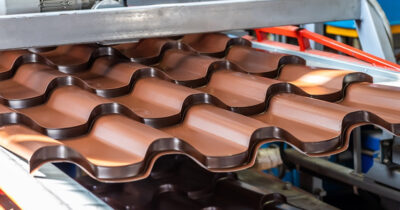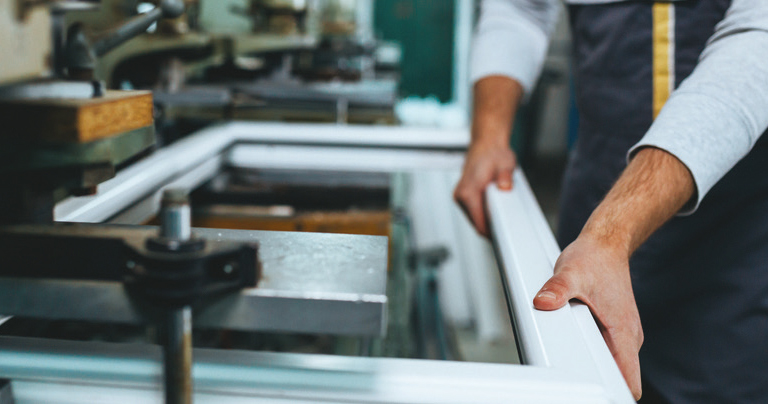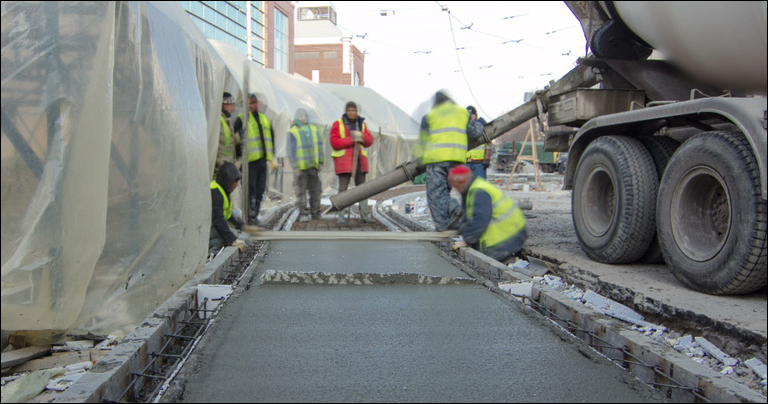Green trajectory: PEB & Roofing embrace eco-friendly materials
By Edit Team | May 9, 2023 12:40 pm SHARE

The discussion highlights the innovations in solar solutions and technology in the roofing industry, the evolution of design and aesthetic concepts in pre-engineered buildings and rapid construction, the increasing demand for eco-friendly cladding materials and solutions, and the importance of technology in the construction industry.
As the world moves towards a more sustainable future, there is a growing demand for roofing solutions that contribute to renewable energy targets while being eco-friendly, cost-effective, and visually appealing.
Design and aesthetic concepts in PEB and rapid construction
The design and aesthetic concepts in pre-engineered buildings (PEB) and rapid construction have evolved with technological advances. Modern PEBs are not only functional but also visually appealing.
Traditionally, construction projects have prioritised function over form, but technological advances allow greater design flexibility and aesthetic possibilities in preengineered buildings (PEBs) and other rapid construction methods. Today, builders are exploring new approaches to create sustainable, energy-efficient structures that look great.
Mr. Sunil Lidkar, National Business Manager – Steel, Trimble Solutions India, discusses how design and construction technology advances have changed the approach to pre-engineered buildings (PEBs) and rapid construction. PEBs are now not only functional but also visually appealing. They are highly versatile and can be adapted to suit different architectural styles and designs, allowing for a wide range of options in terms of building aesthetics. Lidkar highlights that Tekla’s software is unique due to its ability to integrate seamlessly with other design software. The seamless integration enables engineering or construction companies to streamline the entire design, build, and fabrication process, making it faster and more efficient.
Green materials and solutions for cladding on construction sites
The construction industry is shifting towards eco-friendly practices, and cladding is no exception. This has increased demand for sustainable materials and solutions that reduce the industry’s carbon footprint. U. N. Sharma, Director – of Commercial at Colorshine, explains that they ensure the sustainability and durability of their products by conducting regular quality checks and following certain standard operating procedures. To ensure environmental friendliness, they source high-quality paints from reputed suppliers like Berge Becker, Nippon, and PPG Asian.
Overcoming cost differences for long-term energy efficiency
Although achieving long-term energy efficiency may require overcoming cost differences, it can result in substantial savings and environmental benefits. According to Ms. Anamika Gulati, Executive Vice President, Renewables – SG Ornate, the challenge lies in matching the cost difference to achieve the next level of energy efficiency. However, by diversifying energy efficiency resources, ensuring persistent savings, and integrating energy efficiency with a carbon reduction framework, this challenge can be overcome. Mr. Alok Kumar, Business Development Manager, DION Incorporation, on the other hand, suggests that it is easy to match cost differences if you are a strategic product manufacturer and seller. DION has ventured into producing uPVC corrugated three-layer roofing sheets that are cost-effective and energy-efficient.

Technology and sustainability are furthering the roofing industry
On the technology part, the construction industry has made significant strides in adopting technology, including Building Information Modelling (BIM). Lidkar explains that BIM creates advanced 3D models embedded with a particular structure’s properties, making planning and execution more efficient.
Commenting on this, Mr. Lidkar explains that organisations also realise the importance of ensuring the BIM model fits precisely onto the actual structure, a concept known as the ‘digital twin.’ AR and VR tools are being deployed along with total stations to simulate the model’s placement on the project site, identify errors before construction, and ensure design feasibility on the ground.
Mr. Kumar highlights the importance of sustainability in roofing solutions. Their DION uPVC sheets provide an optimal choice for roofing and cladding, replacing conventional materials like asbestos, metal G.I. sheets, fiberglass, and ceramic tile sheets. They offer several benefits, such as heat insulation, sound insulation, water resistance, chemical and alkali resistance, corrosion resistance, and fire retardation, and they are ecofriendly.
Ms. Gulati explains how sustainability drives demand for innovative solar solutions and technologies in the roofing industry. She believes that the roofing industry can contribute towards sustainable energy generation by offering roofing solutions that harness solar power and contribute towards India’s renewable energy targets. According to Sharma, some customers prefer to try their new products as soon as they hit the market, but most prefer to wait and see the benefits before making a purchase. Once they see others using the new colours or patterns successfully, they are more likely to give it a try. Colorshine will focus on the southern markets to introduce their latest products.
Choosing metal for structures: defining parameters and pricing factors
When Choosing the right material is crucial when building structures to ensure strength, durability, flexibility, and more. According to Ms. Gulati, metal is the best choice for structures due to its ability to withstand natural and environmental crises. The increasing demand for INROOF, an environmentally friendly metal roofing solution from APL Apollo & Ornate Group, is a testament to the industry’s eagerness to embrace sustainable concepts. However, Mr. Kumar warns that metal prices can be unpredictable due to global geopolitical issues. Despite this, DION has managed to thrive in the Indian metal industry by prioritising quality and adapting to market changes.
Maintaining custom PEB structures: addressing O&M issues for longevity and safety
During the Roof India Expo, many seminars focused on custom PEB structures and how to maintain them properly. Mr. Lidkar shared some valuable insights on the matter. He stated that following maintenance practices is essential to prevent steel from rusting when exposed to sunlight. To ensure maximum safety and longevity, there are various aspects to keep in mind, including improving the 3D modelling process and deciding how to paint or coat the structure for better results.
Mr. Lidkar also noted that the 3D model used for design and detailing could be utilised for expanding and maintaining the finished structure. This means that the same BIM model created by software like Tekla Structures can be used to build expansions, such as increasing an airport or railway structure from 9 feet to 12 feet, eventually to 15 feet. In addition, the roofing and construction industries are becoming more sustainable by using eco-friendly materials and adopting advanced technology for building design. While initial costs may vary, opting for durable metal structures and ensuring proper maintenance can offer long-term energy efficiency, savings, and environmental benefits.
Cookie Consent
We use cookies to personalize your experience. By continuing to visit this website you agree to our Terms & Conditions, Privacy Policy and Cookie Policy.




















































